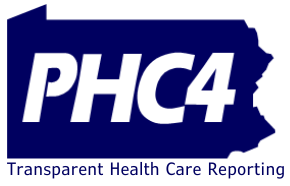Health care regionalization services assign patients who are critically ill, or have high-risk conditions, to hospitals that perform higher numbers of relevant specialized treatments and surgeries. Dr. Rie Sakai-Bizmark, Investigator, The Lundquist Institute and Assistant Professor of Pediatrics, David Geffen School of Medicine at UCLA, used inpatient discharge data to study the effects of regionalization on pediatric patients requiring cardiac surgery. The objective of the study entitled, Impact of Pediatric Cardiac Surgery Regionalization on Health Care Utilization and Mortality, was to evaluate the volume-outcome relationship and to examine the effect of regionalization on in-hospital mortality, length of stay and cost. Using a large database of hospital discharges occurring between 2000 and 2012 from eleven states, including Pennsylvania, the researchers working on Dr. Sakai-Bizmark’s team explored regionalization trends in pediatric cardiac surgery and assessed differences in the trends across states, estimating the number of avoidable deaths and the number of transfers, in order to assess the impact of regionalization.
Dr. Sakai-Bizmark stated, “The Pennsylvania Health Care Cost Containment Council’s (PHC4) inpatient discharge data were integral to our investigation of regionalization trends and outcomes in pediatric cardiac surgery across the country. Including Pennsylvania in our multi-state dataset allowed us to account for approximately 46% of the U.S. population.”
The study methodology and design relied on The Risk Adjustment for Congenital Heart Surgery-1 (RACHS-1) method. According to Dr. Sakai-Bizmark, this method “was used to identify pediatric cardiac surgery patients. RACHS- 1 encapsulates 79 conditions and six levels of risk, as determined by patient age, type of congenital heart disease, and procedure type.” She goes on to say, “In-hospital mortality, length of stay, and costs were assessed using multivariable hierarchical regression with state and year fixed effects. The primary predictor was hospital case-volume, categorized into low-, medium-, and high- volume tertiles.” Dr. Sakai-Bizmark explained, “Our models showed that patients receiving pediatric cardiac surgery in high-volume hospitals had lower mortality rates and lower hospital costs. This indicates that regionalization had a beneficial impact on patient outcomes.”
The study found that high-volume hospitals tend to take higher risk patients. Dr. Sakai-Bizmark shared the following results:
- In high-volume hospitals, almost 5% of the patients were categorized as high severity (RACHS 5 or 6); 12% were categorized as low severity (RACHS 1).
- In low-volume hospitals, only 1.76% of patients were categorized as high severity, with 21.8% categorized as low severity.
- The percentage of Pennsylvania hospitals categorized as high volume was 8.8% in 2000 and 9.5% in 2012, which is about average when compared among the 11 states studied. In 2012, 35% of hospitals in California and 5.4% of hospitals in Arizona were categorized as high volume.
The study was published in PubMed Central.1 In describing the study’s data requirements, Dr. Sakai-Bizmark noted that she was able to obtain the PHC4 data needed for the project and would like to use PHC4 data for future projects on inpatient care, including a study of health issues in the homeless population.
In recommending PHC4 data to other researchers, she states, “We would recommend PHC4 data to other researchers because it is a comprehensive and detailed inpatient dataset that can be obtained through an efficient and reasonably priced request process. We greatly appreciate the knowledge and efficiency that PHC4’s special request department brings to the data request process. Numerous questions were answered throughout the request process, and we were provided expert guidance on the best way to utilize PHC4 data to address our complex research questions.”
1Sakai-Bizmark R, Mena LA, Kumamaru H, Kawachi I, Marr EH, Webber EJ, Seo HH, Friedlander SIM, Chang RR. Impact of pediatric cardiac surgery regionalization on health care utilization and mortality. PubMed. 2019 Aug;54(4):890-901.
Return to the Case Studies page: VIEW ALL CASE STUDIES


